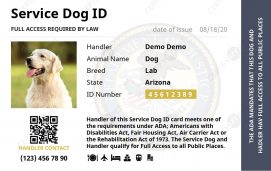To understand what an emotional support dog is, let’s first remind ourselves what an emotional support animal is. An emotional support animal is an animal that provides the emotional support necessary to help a person with a mental or emotional disability that impairs their abilities to perform certain tasks to successfully perform those tasks. The emotional support animal does not help the individual perform any part of those tasks, merely provides the emotional support that allows the individual to perform the tasks for him or herself.
Almost any animal can be an emotional support animal, with few exceptions, but by far the most common emotional support animal is the dog. An emotional support dog is also sometimes known as a therapy dog.



















